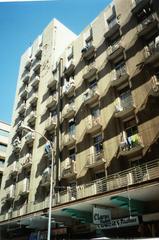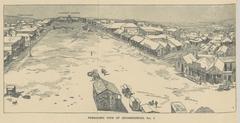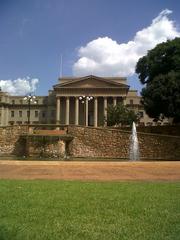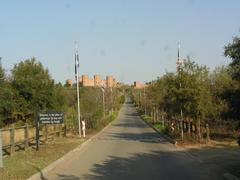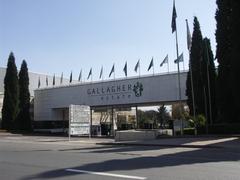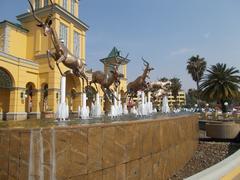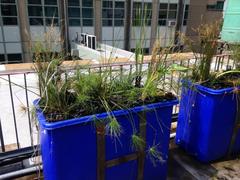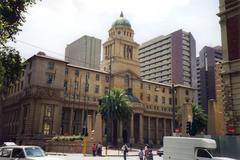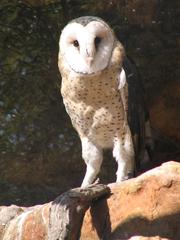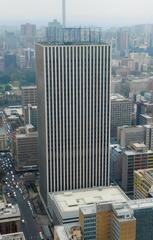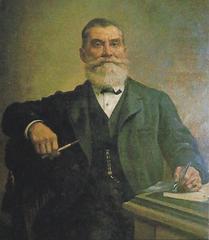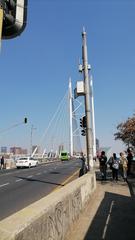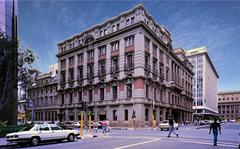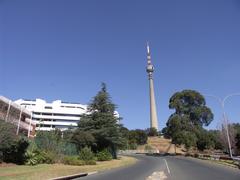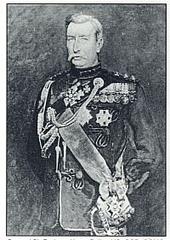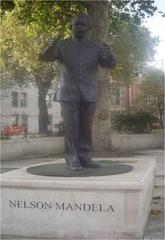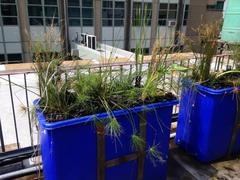Scottish Horse War Memorial: Visiting Hours, Tickets, and Complete Guide to Johannesburg Historical Sites
Date: 14/06/2025
Introduction
The Scottish Horse War Memorial stands proudly atop Caledonia Hill in Johannesburg’s Kensington suburb, serving as a significant tribute to the Scottish Horse regiment and their sacrifice during the Second Anglo-Boer War (1899–1902). Not only is the memorial a symbol of valor and remembrance, but it also illustrates the intricate connections between South Africa and Scotland through its distinctive design and cultural symbolism. This guide offers a comprehensive overview of the memorial’s history, architectural features, visitor information—including hours, accessibility, and travel tips—and its place within the broader landscape of Johannesburg’s historical sites (Joburg Heritage Foundation; Heritage Portal; South African Heritage Resources Agency).
Table of Contents
- Introduction
- Location and Setting
- Architectural Features and Symbolism
- Symbolism and Meaning
- Visitor Information
- Cultural and Historical Significance
- Practical Tips for Visitors
- Accessibility for International Visitors
- Environmental Considerations
- Frequently Asked Questions (FAQ)
- Conclusion
- References
Location and Setting
The Scottish Horse War Memorial commands a striking position atop Caledonia Hill in Kensington, Johannesburg. This prominent location was chosen for its symbolic elevation and panoramic views over the city, embodying both vigilance and remembrance. Access to the site is via Highland Road, with a moderately steep paved path leading up to the memorial. The approach, while scenic, includes stone steps and may be challenging for those with limited mobility (Joburg Heritage Foundation).
Coordinates: Approx. -26.2007° S, 28.0986° E.
Transport: Private vehicles or ride-hailing services are recommended, as public transport options are limited. Informal parking is available at the base of the hill (Google Maps).
Architectural Features and Symbolism
Obelisk Structure
The memorial features a granite obelisk rising approximately 10 meters above its base. This classic form symbolizes aspiration, sacrifice, and enduring remembrance, echoing the tradition of commemorative monuments worldwide (South African Heritage Resources Agency).
Base and Plinth
Set atop a tiered plinth constructed from locally quarried stone, the obelisk is anchored both physically and symbolically to the South African landscape. The base is surrounded by a cairn-like arrangement of stones, traditionally signifying collective memory and respect.
Inscriptions and Plaques
Bronze plaques once adorned the plinth, listing the names of the fallen—officers, non-commissioned officers, men, and Zulu scouts—accompanied by a solemn dedication to those who perished during the South African War.
Decorative Elements
A stylized thistle, Scotland’s emblem, crowns the obelisk. Other details include a carved claymore sword and shield bearing the Scottish Arms, as well as the regimental motto “Nemo me impune lacessit” (“No one attacks me with impunity”), connecting the memorial to its Scottish roots (Wikipedia; Heritage Portal).
Symbolism and Meaning
The upward thrust of the obelisk represents the souls of the fallen and the lasting legacy of their sacrifice. The thistle and claymore motifs reinforce themes of resilience, bravery, and cultural identity. The memorial’s location on Caledonia Hill—named after the Roman term for Scotland—underscores the transnational bond between South Africa and Scotland (Monuments SA).
Visitor Information
Visiting Hours and Tickets
- Hours: Open daily from dawn to dusk (approximately 6:00 AM – 6:00 PM).
- Entrance Fee: Free; no tickets required.
Accessibility and Travel Tips
- Access: The memorial is reached via a short but steep paved path and steps; not suitable for wheelchairs or those with severe mobility challenges.
- Parking: Informal parking available at the base of the hill on Highland Road.
- Public Transport: Limited; private vehicles or ride-hailing are recommended.
- What to Bring: Comfortable shoes, water, sun protection, and a camera.
Best Times to Visit
- Optimal Visit: Early morning or late afternoon for the best lighting and cooler temperatures.
- Events: Remembrance Day services in November and occasional guided heritage walks.
Facilities and Safety
- Onsite Facilities: None; no restrooms, cafés, or shops.
- Safety: The site is generally safe during daylight hours. Standard urban precautions apply—avoid displaying valuables and visit in groups when possible (South African Police Service).
Nearby Attractions
- Rhodes Park: Offers restrooms, playgrounds, and picnic facilities (Rhodes Park Info).
- Other Historical Sites: Jeppe Boys’ High School memorial, Johannesburg War Museum (Ditsong Museums), and Kensington’s historic streets.
Guided Tours and Events
- Tours: Not regularly available, but heritage organizations sometimes include the site in special walks or commemorative events.
- Events: Remembrance Day and heritage walks are the main annual events.
Photography and Filming
- Photography: Encouraged for personal use.
- Drone Use: Not permitted.
- Commercial Filming: Requires permission from the City of Johannesburg’s heritage office.
Cultural and Historical Significance
Origins and Purpose
The Scottish Horse regiment, established in 1900 under Lord Kitchener, played a vital role in the Western Transvaal campaign during the Anglo-Boer War. The memorial, unveiled in 1904, commemorates not only those killed in action but also those lost to disease, wounds, or accidents—including Zulu scouts, reflecting the regiment’s diversity (Heritage Portal).
Design Elements
The 26-foot Celtic cross, red Scottish granite, claymore sword, and cairn base closely mirror the Scottish Horse Memorial at Edinburgh Castle, symbolizing the shared heritage between South Africa and Scotland (Heritage Portal).
Commemoration and Inclusivity
The original plaques listed 125 names, including four Zulu scouts and a variety of regimental roles. The same names are inscribed on a companion memorial in Edinburgh, demonstrating the transnational nature of remembrance (Heritage Portal).
Preservation and Community Role
Vandalism and theft have threatened the memorial’s integrity, resulting in the replacement of bronze plaques with stone versions and increased community engagement in preservation. The site continues to play a vital role in education, remembrance, and community identity (Waymarking).
Practical Tips for Visitors
- Dress comfortably for walking uphill.
- Bring water and sun protection.
- Plan visits during daylight.
- Respect the site—do not climb on the monument.
- Combine your visit with nearby attractions for a full heritage day.
Accessibility for International Visitors
- Language: English is widely spoken.
- Transport: ~25-minute drive from O.R. Tambo International Airport.
- Entry: No restrictions or fees.
Environmental Considerations
The memorial is set within a sensitive ridge ecosystem. Visitors should stay on designated paths, avoid littering, and participate in community clean-up initiatives when possible.
Frequently Asked Questions (FAQ)
Q: What are the visiting hours?
A: Daily from dawn to dusk (approx. 6:00 AM – 6:00 PM).
Q: Is there an entrance fee?
A: No, the memorial is free to visit.
Q: Is parking available?
A: Yes, informal parking is available at the base of the hill.
Q: Is the memorial accessible for wheelchairs?
A: Access is limited due to the incline and steps.
Q: Are guided tours available?
A: Not regularly; check with local heritage groups or the Joburg Heritage Foundation for event schedules.
Q: Can I bring my dog?
A: Dogs on leashes are generally accepted.
Q: Can I take photos?
A: Yes, amateur photography is encouraged.
Q: What other sites are nearby?
A: Rhodes Park, Kensington historic streets, Jeppe Boys’ High School memorial, Johannesburg War Museum.
Conclusion
The Scottish Horse War Memorial offers a profound and contemplative experience for visitors interested in Johannesburg’s history, military heritage, and cultural identity. Its commanding position, symbolic design, and enduring significance make it an essential Johannesburg historical site. With year-round free access, panoramic views, and rich historical context, the memorial is both a place of remembrance and a window into South Africa’s multi-layered past.
For the latest updates, event information, and travel tips, follow the City of Johannesburg’s heritage department and local heritage groups. Enhance your visit by exploring nearby historical attractions and engaging with community-led initiatives that ensure the preservation of this important landmark.
References
- Scottish Horse Memorial Honouring Fallen, 2023, The Heritage Portal (The Heritage Portal)
- Journey through the Rich History of the Vandalised Scottish Horse Memorial, 2023, The Heritage Portal (The Heritage Portal)
- Scottish Horse War Memorial, 2023, Joburg Heritage Foundation (Joburg Heritage Foundation)
- Scottish Horse War Memorial Site, 2023, South African Heritage Resources Agency (South African Heritage Resources Agency)
- Scottish Horse War Memorial, 2023, Wikipedia (Wikipedia)
- Scottish Horse War Memorial, 2023, Monuments SA (Monuments SA)
- Scottish Horse War Memorial, 2023, Artefacts.co.za (Artefacts.co.za)
- Scottish Horse War Memorial, 2023, Joburg Heritage (Joburg Heritage)
- The Scottish Horse Memorial, 2023, Waymarking (Waymarking)
- Scottish Horse War Memorial, 2023, Military History Fandom (Military History Fandom)
- Commonwealth War Graves Commission – Scottish Horse Memorial, 2023 (Commonwealth War Graves Commission)
- Johannesburg Tourism, 2023 (Johannesburg Tourism)
- Ditsong Museums Military History, 2023 (Ditsong Museums)


